Tintoretto was a man with great natural talent… And many names.
Jacopo Tintoretto was the firstborn of 21 children, and his father was a silk dyer by trade. Tintoretto, in fact, means “little dyer,” and it is from this that Tintoretto got his nickname. His real name is Jacopo Comin, and in his adolescent years he was also known as Jacobo Robusti. In his years as a painter, he also landed the nickname “il furioso,” or “the furious one,” for his rapid painting style. This, along with being one of 21 children, had to give him some difficulties in finding his identity…
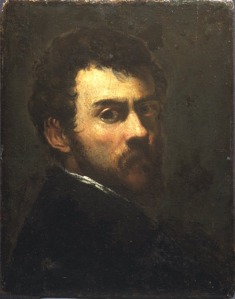
“Self Portrait” – Tintoretto
http://www.vam.ac.uk
Tintoretto reached his status as an excellent painter without really having any formal training.
When Tintoretto was a young boy, he starting daubing paint on walls at his home. His talent was noticed by his father, and at the age of 15 Tintoretto started studying under Titian. This, however, only lasted for about 10 days before Titian sent him out of his studio, either out of jealousy of such a promising painter, or because Titian deemed that Tintoretto was a good painter, but not a good pupil. I hope it was the latter – it would be disheartening to know that a mastery painter would not aid in the development of a young boy with that much potential. Unfortunately, though, some artists do not want rivals to shadow their work. I will choose to give Titian the benefit of the doubt on this one.
After training with Titian, Tintoretto never learned under anyone else. Instead, he practiced on his own and was influenced greatly by the works of Michelangelo and Titian. He actually had inscribed in his studio: “The drawing of Michelangelo and the color of Titian.” Although he admired the work of these two artists, his own style was more emotive, fierce, and dramatic. It’s amazing to me how dedicated and motivated he was to learn to paint on his own. His passion for the art is inspiring, and his work is a testament to his zeal. There is no doubting why he became one of the greatest painters in the Italian Renaissance.
Tintoretto set up some interesting still-lifes to help him with his paintings…
One of Tintoretto’s impressive and notable qualities in his work is his use of foreshortening. In order to master this skill, he became an expert in the wax and clay method of modeling, which he used to create “little models.” His supplies to create these models included dead objects which had been dissected or depicted in anatomy books. He then draped them or left them nude as he assembled in and hung them from boxes, casting various light sources on them and drawing them from all angles. I love how experimental he was with light and angles, and once again how dedicated he was to excelling in his skills, even though his subject matter to do so may have been a little disturbing.
Tintoretto was most famous for and successful with his religious paintings.
Some of Tintoretto’s greatest works include the four separate works of the St. Mark’s paintings, the painting of virtually the entire interior of the Scuola di San Rocco, and his painting titled Paradise. The St. Mark’s paintings were commissioned by the Scuola di San Rocco, and from there he worked with the church for 20 years as he filled virtually every wall with canvas paintings. The church is truly a beautiful work of Tintoretto’s original art.
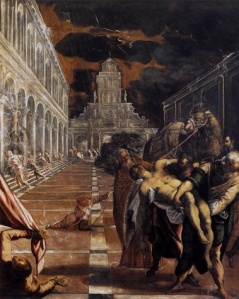
“The Saint’s Body Brought to Venice” – Tintoretto
http://www.terminartors.com
Here is a link to a virtual tour of the Upper Hall of the Scuola di San Rocco:
http://www.scuolagrandesanrocco.it/en/virtual-tour-the-upper-hall-high-quality.html
Paradise was Tintoretto’s last work of significance, and he certainly went out with a bang. This painting was done before any commission was given, and at 74 ft by 30 ft, it is regarded as the largest painting ever done on canvas. Apparently the reason he completed it without commission was due to his hope that the painting would be his “recompense after death.” I suppose he is literally using his art for spiritual purposes, but I wonder if he took into consideration the verses in Ephesians 2 stating that we are saved by grace, not by works. Regardless, it is certainly an impressive piece, and one to ponder as it seems to depict the Last Judgement.
Overall, I admire Tintoretto in many ways. He knew his God-given talents, and he developed those skills and was able to share them to millions of people. I believe that if we truly follow the passions that have been instilled in us, God will bless that. If artists do that well, they can make a significant impact on the world.
Sources:
“Jacopo Tintoretto.” BBC.co.uk. British Broadcasting Company, 2013. Web. 23 Sept. 2013. <http://www.bbc.co.uk/arts/yourpaintings/artists/jacopo-tintoretto-5805>.
“Jacopo Tintoretto (Robusti) Biography.” JacopoTintoretto.org. Creative Commons License, 2013. Web. 23 Sept. 2013. <http://www.jacopotintoretto.org/biography.html>.
Vincent, Finnan. “Jacopo Tintoretto: The Last Great Artist of the Italian Renaissance.”Italian Renaissance Art.com. N.p., 2013. Web. 23 Sept. 2013. <http://www.italian-renaissance-art.com/Tintoretto.html>.

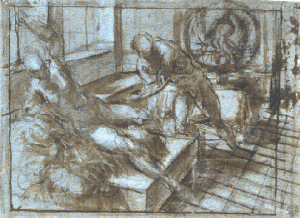
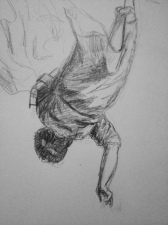
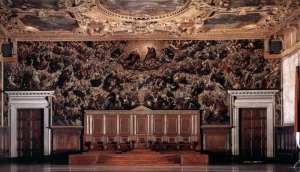
The detail and drama in Tintoretto’s “The Saint’s Body Brought to Venice” is amazing! Also thanks for the link to the Virtual Tour of the Upper Hall! It is amazing that he painted so much and with such incredible realism. I am also curious to know why Tintoretto did an apprenticeship with Titian for only 10 days. Seeing all these great painters makes me wonder why today art does not have such a prominent place in the church as it once did?